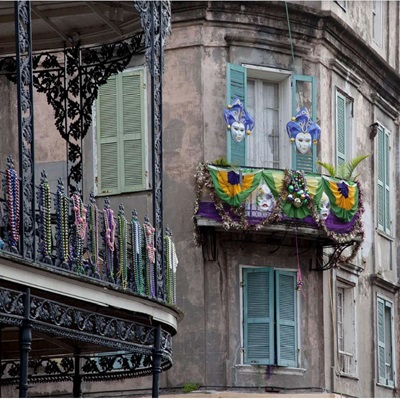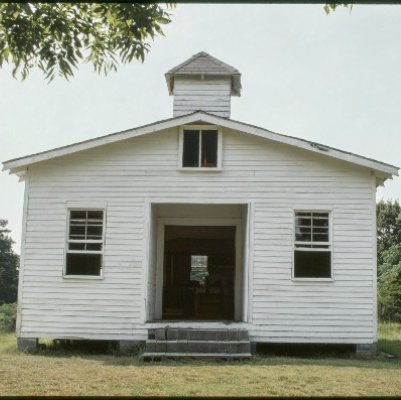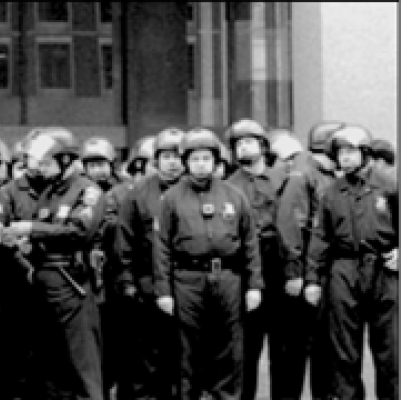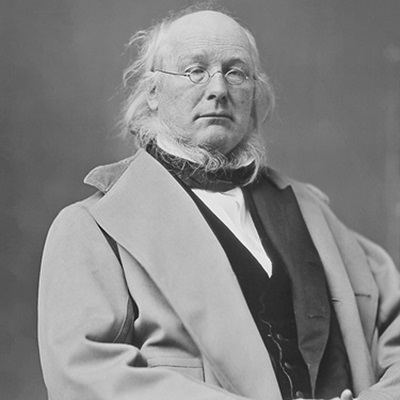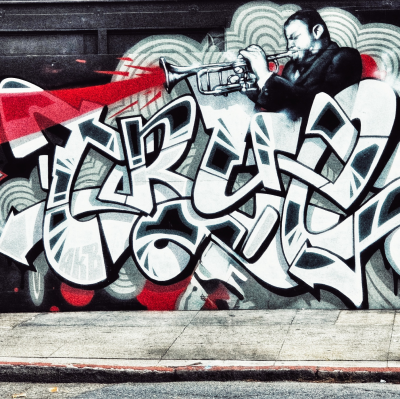.
.
In a 2003 Jerry Jazz Musician interview, John D’Emilio, author of Lost Prophet: The Life and Times of Bayard Rustin, talks about one of the most important figures of the American civil rights movement, and a mentor of Dr. Martin Luther King.
.
.
___
.
.
Bayard Rustin is one of the important figures in the history of the American civil rights movement. Before Martin Luther King, before Malcolm X, Rustin was working to bring the cause to the forefront of America’s consciousness. A teacher to King, an international apostle of peace, and the organizer of the famous 1963 March on Washington, he brought Gandhi’s philosophy of nonviolence to America and helped launch the civil rights movement.
Nonetheless, Rustin has been largely erased by history, in part because he was an African American homosexual. In Lost Prophet: The Life and Times of Bayard Rustin, acclaimed historian John D’Emilio tell the full and remarkable story of Rustin’s intertwined lives: his pioneering and public person and his oblique and stigmatized private self.#
D’Emilio discusses this singularly important American — a man who emerged as a hero of the black freedom struggle — in a December, 2003 interview with Jerry Jazz Musician editor/publisher Joe Maita.
.
.
___
.
.
.
Leffler, Warren K/Public domain, via Wikimedia Commons
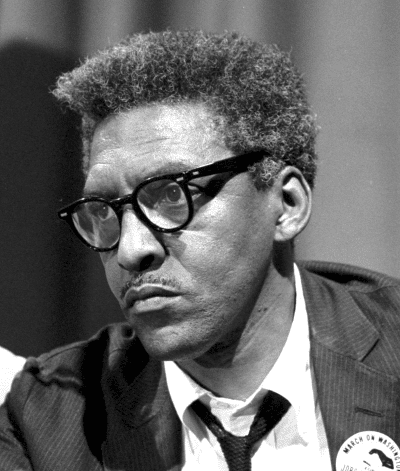
Bayard Rustin, 1963
.
“Segregation in any part of the body politic is an act of slavery and an act of war. Civil disobedience against caste is not merely a right but a profound duty…it will prick the conscience of America as Gandhi’s campaigns stirred the hearts of men the world over…If the government continues to consider such action treason, let them recall the advice that Justice Jackson gave the German people at the opening of the Nuremberg trials: Men, he said, are individually responsible for their acts, and are not to be excused for following the unjust demands made upon them by Government.”
– Bayard Rustin.
.
___
.
JJM In describing Bayard Rustin, War Resisters League member Roy Finch wrote, “I found Bayard fascinating. I thought of him as a four-way outsider. First of all he was black. But, he was a strange black in a way because all of his friends were white and he moved in white circles. And secondly he was a Quaker by birth and a person who had been a pacifist all his life, and that was in his bones. Thirdly he was gay. This was something that got him into a lot of trouble in many ways. Fourthly, he was an artist. He had a very artistic temperament.” Given all that worked against him, how did Rustin reach beyond the constraints that society imposed?
JD’E Well, the thing that this quote tells us is that this was a man of extraordinary talent and intelligence. Think about what it meant to be black in that generation, and what it meant to be gay in that generation. Add to that the fact that he was illegitimate and came from a family of very modest means. That he could carve out a place for himself of such influence and importance in the world tells us that he was extraordinary. He grew up with great reservoirs of character and fortitude that were imparted to him by the grandmother who raised him. All testimony about her suggests that she too was an amazing individual — a fascinating black woman who never let racial prejudice stop her.
JJM She once told him, “In selecting your male friends, you should be careful that you associate with people who have as much to lose as you have.” When did his sexuality first create problems with his career?
JD’E It started in the forties. As a pacifist and conscientious objector, he decided to go to prison rather than cooperate with the military during World War II. This was not, of course, a popular decision, and certainly not an easy thing for a black man to decide to go to federal prison. While incarcerated he began to organize inmates against racial segregation in the prison, and became quite successful at this. As he got closer to putting pressure on the prison system, they brought him up on charges of sexual misconduct for having sex with other inmates – not an uncommon thing in a prison environment. Consequently, this “sexual misconduct” got used against him to dash his hopes of leading prisoners in a strike, and it exposed him to being gay during an era when this type of information could mark the end of a person’s career. It is from that point on that his being gay becomes this discussed problem within the peace movement and, later, within the civil rights movement.
JJM Following his prison indiscretion, his mentor, the pacifist A.J. Muste, wrote to Rustin, “Don’t you see that with your undiscipline, deceit practiced on your dearest comrades, superficiality, jumping about, arrogance, you are — in one sense — running away from your self and — in another — destroying yourself?” It was at this point that Muste advised him to show an interest in women, rather than men…
JD’E Yes, that’s right. This is a very Christian environment. These are people who believe that by the power of prayer you can move mountains. One of the ironies is that Muste was probably considerably more tolerant and open-minded than many other people would have been. But he viewed Rustin’s sexuality as being out of control and thus getting him into trouble. So, for Muste, the solution to this is for Rustin to say “no” to it.
JJM How did Rustin react to that?
JD’E He gave some thought to it. He spent months in prison, struggling to make sense of what had happened to him, and where this should take him. But in the end he made the decision to acknowledge that he was indeed gay, and realized that a life of either celibacy or heterosexuality was not meant for him. He tried to push Muste’s imploring aside and basically rejected Muste’s “solution.”
JJM It isn’t exactly realistic for someone to exercise the kind of restraint Muste asked of him.
JD’E It is especially hard to imagine it now because we live in such a sexualized society, where sex seems to be so central to self-expression. In the context of two generations ago, it was probably unrealistic, but it was probably something that many men tried to do.
JJM After he got out of prison, he became involved in the campaign to desegregate the military, which union leader A. Philip Randolph was spearheading. What sort of questions concerning strategy, tactics and goals were raised during this campaign?
JD’E Rustin came from the wing of the civil rights movement that always emphasized direct action, civil disobedience, and with an attitude that breaking the law in a disciplined way would expose the injustice of the law. On the one hand organizations like the NAACP at the time were trying to push for the desegregation of the military by lobbying members of Congress and trying to exercise influence with the President. Randolph — encouraged, supported, abetted, and prodded by Bayard Rustin — was trying to build a popular campaign of resistance to military segregation by involving men who refused to register for the draft because of it, and through veterans’ rallies and protests. There was a whole spectrum of activities, and Rustin was among those pushing for the most militant opposition to segregation.
JJM Randolph said at the time, “These Negroes are in no mood to shoulder a gun for democracy abroad so long as they’re denied democracy here at home.”
JD’E Randolph made some amazingly strong statements in the late forties, to the point that some senators — and not simply Southern segregationist senators — actually felt that he was making treasonable comments, particularly in the context of the Cold War that was emerging in the forties. Some felt he was encouraging people in the service to rebel.
JJM Upon receiving the Thomas Jefferson Award from the Council Against Intolerance, Rustin said, “Segregation in any part of the body politic is an act of slavery and an act of war. Civil disobedience against caste is not merely a right but a profound duty…it will prick the conscience of America as Gandhi’s campaigns stirred the hearts of men the world over.” At what point was Rustin convinced that Gandhian approaches to racial injustice had the capacity to work?
JD’E He discovered Gandhi right at the end of the thirties. The period of the twenties, thirties and forties contains fascinating history. During this time, Protestant ministers and other religious people served as American missionaries abroad. A whole group of these missionaries were captivated by the Gandhian resistance they saw develop in India. As they came back to America, they began writing and talking about Gandhi in an attempt to spread his teachings. Rustin, who was a young Quaker and militant activist in the late thirties and early forties, participated in discussion circles and began to imagine relaying Gandhi’s message and employing his methods in the United States. He wanted to have this essential spiritual activism — rooted in morality — work here. While Rustin wasn’t working on this alone, of the various men and women who were picking up the message of Gandhi, he was the one communicating it most effectively and who had the greatest influence.
JJM What was Martin Luther King’s level of interest in Gandhi at this time?
JD’E During his theological education, he would have been exposed to Gandhi’s philosophy and the events of the thirties and forties that Gandhi played a part in. But he hadn’t studied Gandhi, nor had he deliberately or consciously made the statement that he was committed to non-violent activism as a way of making change in society. Rustin was the one saying that. One of the things I do in my book is point to the ways Rustin was critical in transforming King from a young minister with charismatic potential — whose major accomplishment was in leading a community boycott of buses — into an international figure who practiced a philosophy of non-violence as a way to achieve social justice.
It is quite interesting to watch the pairing of Rustin and King because they are so different from each other. King is the Southern Baptist, Rustin is the Northern Quaker. King grows up in a small community in the South, while Rustin is an adopted New Yorker. One is gay while the other is straight. The contrasts are remarkable, yet they really took to each other. In King, Rustin saw the potential for greatness, while in Rustin, King saw an inexhaustible fountain of smart advice and strategy.
JJM One of the events that Rustin helped create – the Prayer Pilgrimage in Washington — catapulted King into the national eye, and from this the Southern Christian Leadership Conference was created. The creation of the SCLC was Rustin’s idea?
JD’E Yes. When King got started, he was a local minister leading the people of Montgomery, Alabama in the protest of bus segregation. Rustin viewed King as a man having such charismatic appeal that he could move mountains. His goal became moving King from being a local community leader to a national leader. One of the ways Rustin worked to make this happen was by persuading King to see that in order to get things to happen, he needed to create an organization, and that became the Southern Christian Leadership Conference. The other thing Rustin did was get King an audience beyond the South. His ties to national leaders like A. Phillip Randolph helped create opportunities for this — the Prayer Pilgrimage in Washington, D.C. being one. So, King’s national profile began to build.
.JJM You point out the frequent differences of opinion among the civil rights organizations — particularly the NAACP. In a letter to NAACP president Roy Wilkins, Randolph wrote, “It is my feeling that there may be numerous other projects for the advancement of civil rights that need dramatization through mass demonstrations.” But the NAACP wasn’t particularly keen on mass demonstrations, were they?
JD’E No, not at all, and in those years especially. First of all, the NAACP was by far the biggest organization. They had more than half a million members, with chapters in every state and with a presence in many cities. But they were really committed to making change through litigation, like Brown v. Board of Education, and through lobbying efforts in Washington, D.C. with liberal, mostly Northern members of Congress. Roy Wilkins, who was a very important figure devoted to the struggle of racial justice, was also a man of very strong opinions. He truly believed that racial justice was going to be achieved through the work of the NAACP, and didn’t want others to get in his way. So besides viewing the demonstrations such as those engineered by Rustin as competition for influence, he believed them to be counterproductive. Most of the time he had to be dragged kicking and screaming to get the NAACP to support mass action. The NAACP was initially very much against the idea of the March on Washington in 1963.
JJM Well, they weren’t the only ones.
JD’E Correct, they weren’t the only ones.
JJM What propelled Rustin to create a mass insurgency like the March on Washington?
JD’E Trouble continued to follow him around his being gay. In 1960, after having worked with King for a number of years and injecting a sort of militancy into the growing civil rights movement, he found himself pushed to the sidelines by other black leaders who were using his homosexuality as a weapon against him. As a result, Rustin was not particularly active during the early sixties, a dramatic and powerful time during the civil rights movement, when it was capturing headlines through sit-ins and freedom rides.
Randolph had proposed a march on Washington in 1941, and although it never took place, even the threat of such a march extracted concessions from President Roosevelt. Because of his long relationship with Randolph, Rustin knew that Randolph still had the dream of a vast march on Washington. Since 1963 marked the one-hundredth anniversary of the Emancipation Proclamation, Rustin felt like that would be a good opportunity for a march. Randolph agreed and asked Rustin to draw up a plan, which would also have to be accepted by the other organizations. That part wasn’t easy. Many of the organizations were quite resistant to this idea, and the Kennedy administration was definitely against having large numbers of African Americans arriving in Washington D.C. But by the early summer, things changed so rapidly — there were so many demonstrations — that it became an irresistible idea. Rustin was the one with the skills and the ability to pull it off.
JJM He said, “The events in Birmingham were more important for organizing the March on Washington than me or anything else.” That clearly created the impetus for so many people to take part in it.
JD’E That’s right. King and the Southern Christian Leadership Conference had targeted Birmingham in the early part of 1963 for demonstrations. At the time, Birmingham had a reputation for being the most segregated city in America, and had been nicknamed ‘Bombingham’ because of the level of violence there. The demonstrations King organized there and the response of the police to them made headlines around the world. It so aroused public sentiment and mobilized the black community that Rustin began thinking they could easily get 100,000 or more people to come to Washington, D.C.
JJM The cast of characters trying to prevent the March from happening was quite interesting. Some are people you would expect, like J. Edgar Hoover and Strom Thurmond. One you wouldn’t expect was Harlem congressman Adam Clayton Powell, who threatened to charge that Rustin and King were having a homosexual affair at the time. What was that all about?
JD’E At the time, there were very few African Americans in Congress, and no congressional Black Caucus. Earlier on, in 1960, when Rustin began to first talk about demonstrations directed at the Republican and Democratic parties, Powell felt that they were invading his sphere of influence. He believed that he was the Washington power broker, not them. As a way of derailing things, he spread the story that if Rustin remained King’s advisor, he would start creating rumors that Rustin and King were sexually involved. Rustin — who loved King and thought the world of him — always said that the one weakness of Doctor King was his inability to stake a position within the ranks of the movement, to stand up to divisiveness. Therefore, Rustin was an easy victim to the kind of tactic someone like Powell was willing to use. Those kinds of things surfaced again in 1963, before the March. A couple of weeks before the March, Strom Thurmond tried to discredit it by saying Rustin was a communist — which he was in the thirties — but when that didn’t do anything, he announced to the senate that
Rustin was a convicted sex criminal and a sex pervert. It was a turning point in Rustin’s career because at that point the civil rights establishment had to defend him. They just couldn’t let Strom Thurmond win something like that. But it is indeed very interesting how these two men – Thurmond and Powell — with totally different agendas in Congress, attempted to subvert the actions of Bayard Rustin.
JJM In public debates with Malcolm X, Rustin said that the Black Muslims “have put forth…no concrete program except speaking on 125th Street.” How did Rustin fare in his public debates with Malcolm X?
JD’E It is likely that you would judge how he fared depending on who you were, listening in. In the late fifties and early sixties, when he debated Malcolm X, people I talked to who saw those performances tended to think Rustin came out ahead. As a listener, if you were looking for a man who was a great strategist, tactician, and had the vision regarding the remaking of society, then Rustin would come out ahead. These are the kinds of things he communicated. But what Malcolm X had, among other qualities, was the capacity to articulate the deep anger about the injustice of racism that was circulating in black communities during this period. He spoke in a way that was non-deferential — it granted nothing to white authority at all. So, rather than the reasoned politics of Rustin, the anger Malcolm communicated was increasingly attractive as the sixties wore on. By the end of the sixties, following Malcolm X’s death, Rustin was debating people like Stokely Carmichael and other black power advocates who would often get the better of him in debates because they were speaking to a mood that Rustin was not quite able to acknowledge.
JJM In 1967, Carmichael said, “What is good for this country is not good for black people. This country is racist from top to bottom, from right to left, and for black people to become a part of that is for them to become in fact anti-black.” Rustin, on the other hand, felt that “militancy is a matter of posture and volume and not of effect.”
JD’E Rustin had no patience for the kind of sentiments that Carmichael offered because he believed such thinking was a recipe for defeat and disaster. He felt that no matter how much racism was imbedded in American institutions and the culture, the only way it was going to be dismantled was through a strategic alliance with white organizations, with liberal whites, and with members of the religious community. To Rustin, speaking in the language of black power was a strategy of isolation and ineffectiveness.
JJM During a speech, Rustin said, “If there is anyone here who advocates violence as a solution, let him stand up! Let him stand up and I will show you someone who proposes to do nothing!”
JD’E Yes, and you can almost feel the drama of the moment, with Rustin at the podium, speaking before a large audience, throwing out the challenge, with no one daring to stand up.
JJM Regarding his vision, he said, “Success depends on people going into the streets…I see mass demonstrations continuing in this country for the next five years, covering wider and wider areas, and becoming more intense.” How did he transmit the experiences of the black freedom struggle to peace activists?
JD’E When Rustin first became involved in the peace movement in the late thirties and early forties, it was basically a conglomeration of individuals who felt morally passionate about pacifism. This was a group who believed that one must never take up arms, and never lift a finger to support war making by the State, no matter how popular the war may be. Rustin’s message — which had an impact for quite a while on the peace movement — was that there will never be peace in the world unless there is also justice in the world, and that the fastest route to peace is not necessarily by espousing pacifism but by building a movement for social and economic justice. That was his message to pacifists all the time. That message most affected pacifists when the leading edge of the civil rights movement was practicing the tactics and philosophies of non-violence, because it was then that white pacifists could see most clearly in the movement for racial justice a vision of a world without violence and war. But, it was a hard struggle, because many pacifists — especially during the Vietnam war — began to believe that fighting for peace was more important than fighting for racial justice.
JJM What did he admire about Lyndon Johnson’s leadership?
JD’E Rustin was somewhat skeptical about politicians. He saw that they were political leaders who had to appeal to a mass constituency that would inevitably lead to compromise — in essence they would give you something and then take something away. What he saw in LBJ was a President who was willing to seize the opportunity to take a strong stance in favor of equal rights. This was demonstrated in his support of the Civil Rights Act of 1964, the Voting Rights Act of 1965, as well as the rhetoric he incorporated into his speeches. Before a joint session of Congress, Johnson actually said, “We will overcome.” Thus, Rustin saw Johnson as a political leader who was doing more for racial justice than any American leader since Lincoln and the Emancipation Proclamation. For all the differences between them, he had enormous respect for what Johnson, as a political leader, accomplished.
JJM Sure, and go back to that era and take a look at the alternative.
JD’E We’re so far distant from that period now, but the Vietnam war so embittered American politics. It got to the point where anyone favoring the war was considered corrupt and tainted by those who opposed it. Rustin believed that type of thinking was suicidal. This is one of the ways that he spoke most clearly, even if not successfully, that no matter what your reservations about Hubert Humphrey — the Democratic party nominee in 1968 — electing Richard Nixon would be an historic turning point. In retrospect, we can say he was probably right.
JJM How did Rustin survive economically?
JD’E In two different ways, and this is one of the funny parts of his life story that I don’t really get into in the book. In the mid-sixties, he became the head of the A. Phillip Randolph Institute — which was funded by various labor unions — and finally earned a decent, middle class salary. Prior to that, he had been supplementing the subsistent wages he got from the War Resisters League by dealing in art and antiques. It is such a gay story; here is this guy slaving away for what seemed to be lost causes, barely making a subsistence wage, who also happens to be this very cultured gay man with an eye for antiques and art. He knew all the antique dealers in New York City, and prior to going to London, for example, to organize an anti-nuclear march, he would find out from the New York dealers what they were looking for. He would then scour the markets of London and find something like a Louis XIV chair, and bring it back to the dealers of New York. The dealers would then give him two pieces as his commission, which he would then turn around and sell. He would find relatively valuable things in these broken down stores. By the later years of his life, his apartment in New York was like a museum. It was filled with religious art from the middle ages and the early modern period, as well as classic furniture, much of which he restored himself.
JJM What question do you most often get asked about Rustin?
JD’E How come we don’t know about him? When I talk about him people want to know why they have never heard of this guy. In part, the answer to that question is that Rustin’s life story is not just about racism, but also about gay oppression, because the reason we don’t know about him is that he had to work in the background all the time as a gay man from this era.
JJM He wrote that his presence in Montgomery was “…incommensurate and stimulating to Martin. I think he needed someone to talk to. I think he totally depended on me, not that I was always right, but I would tell him the truth.” Why have historians understated his role in civil rights movement events?
JD’E It is somewhat understandable why certain groups he worked with would not wish to have him visible, but why not the historians? I think there are a couple of reasons for this. One is that because Rustin was so vulnerable as a gay man, he developed a style of leadership which, in a certain way, left no fingerprints. He worked in a way to make it appear that other people were the important people. Consequently, if you are writing about the civil rights movement, you could easily do so without talking about Rustin except for the March on Washington. In a way, Rustin was actually complicit in his own invisibility, and I don’t mean that as a criticism of him, it is just a fact. He had to figure out how to be influential without the world knowing about it.
To talk about another reason, I would go back to the very first question you asked, about how could someone who was such an outsider manage to function in our society and achieve so much. He was very willful, and part of his personality possessed a kind of contrariness that would, for instance, send him to jail during World War II. One of the things this means for historians who are writing about these periods is that, with the exception of the few years during the height of the civil rights movement, Rustin was always arguing for the contrary, unpopular opinion. Thus, he frequently seemed to be an outsider, and if you are writing a history about the main directions in America’s past, you could easily ignore him. He took contrary positions when he spoke out against black power, and when the anti-Vietnam war movement was growing, he was saying it was necessary to work with the Johnson administration. So, I think these are the reasons historians overlook him. Sure, partly it is because of the gay stuff, but it also has a great deal to do with who he was and how he worked.
.
.
___
.
.
New York World-Telegram and the Sun staff photographer: Wolfson, Stanley, photographer./via Wikimedia Commons
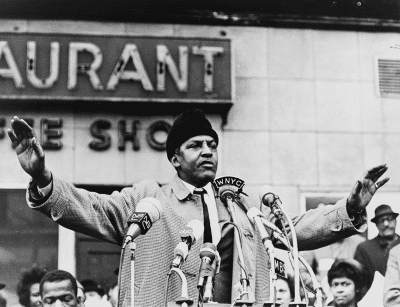
Bayard Rustin, 1965
.
___
.
“I affirm my complete personal commitment for the struggle for jobs and freedom…I pledge that I will not relax until victory is won…I pledge to carry the message of the March to my friends and neighbors back home and to arouse them to an equal commitment…I will pledge my heart and my mind and my body unequivocally and without regard to personal sacrifice, to the achievement of social peace through social justice.”
.
– Bayard Rustin addressing the March on Washington, 1963
.
.
___
.
.
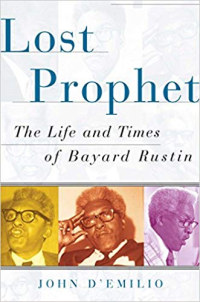
Lost Prophet: The Life and Times of Bayard Rustin
by
John D’Emilio
.
___
.
About John D’Emilio
JJM Who was your childhood hero?
JD’E I would say that it was probably Jesus. I grew up in a very Catholic environment, and was a religious kid. I prayed incessantly, it seems. He would have been a heroic figure for me at that time.
JJM I have asked hundreds of people this question over the years, and this is probably the first time anyone answered Jesus.
JD’E Well, given who I am now, and given the current cultural and political climate, I even hesitate to say Jesus was my hero because it conjures up images of right wing fanatics. But, for a kid growing up in the Bronx in a very small world, Jesus was a wonderfully heroic figure who provided me with a huge amount of comfort.
.
*
.
John D’Emilio is professor of history and of gender and women’s studies at the University of Illinois at Chicago. A Guggenheim and National Endowment for the Humanities fellow, from 1995 to 1997 he served as the Founding Director of the Policy Institute at the National Gay and Lesbian Task Force. He is the co-author of Intimate Matters: A History of Sexuality in America (1997). He earned his Ph.D. from Columbia University in 1982.
.
.
__
.
This interview took place on December 29, 2003, and was produced by Jerry Jazz Musician editor/publisher Joe Maita
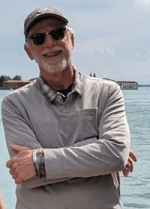
.
.
.
___
.
.
.
Click here to read all Black History Month Profiles on Jerry Jazz Musician
Click here to view all interviews published on Jerry Jazz Musician
Click here to read The Sunday Poem
Click here to read “A Collection of Jazz Poetry – Summer, 2023 Edition”
Click here for information about how to submit your poetry or short fiction
Click here to subscribe to the (free) Jerry Jazz Musician quarterly newsletter
Click here to help support the ongoing publication of Jerry Jazz Musician, and to keep it ad and commercial-free (thank you!)
.
___
.
.
Jerry Jazz Musician…human produced (and AI-free) since 1999
.
.
# Text from publisher
.
.
.







